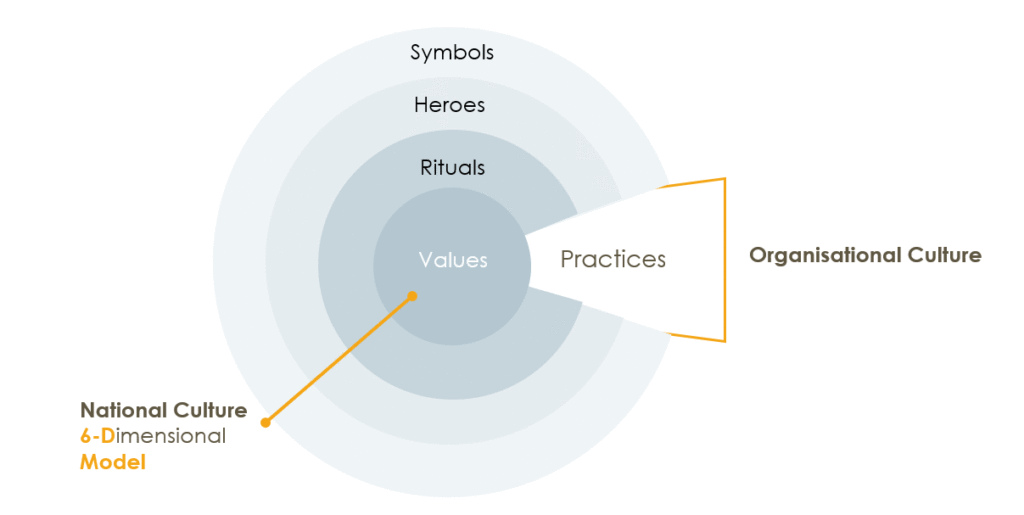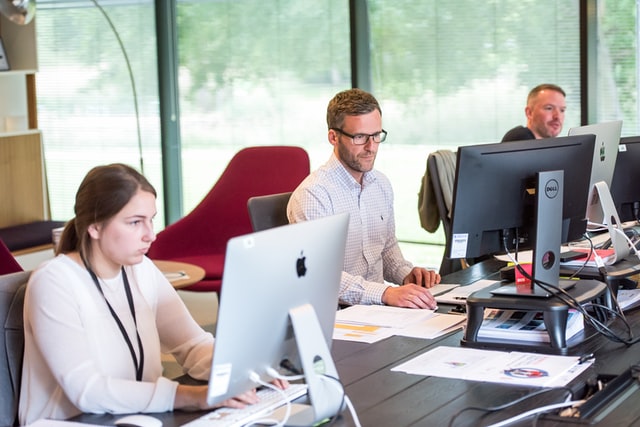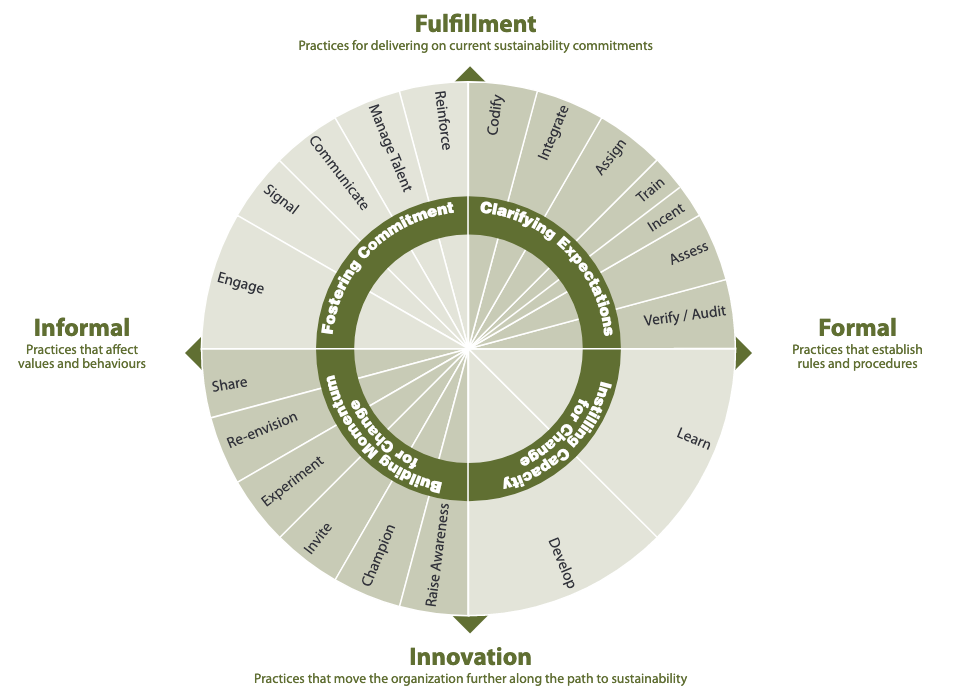How to create a sustainability culture in business? What are the benefits of sustainable culture and what do good examples of sustainable organizational culture look like?
Sustainable Workplaces: From Strategy to Culture
In today’s highly globalized world, sustainability is increasingly becoming an integral part of doing business in any industry.
Reputation management, employment branding, cost savings… there are many reasons why embracing sustainability is detrimental for businesses.
Regarding reputation, we’ve recently analyzed a Forbes & Reputation Institute Ranking of the companies with the best reputation in 2021 that might interest you.
But how can businesses balance their financial, social, and environmental risks, as well as their obligations and opportunities in the long term? That’s an easy one: by developing a sustainability strategy.
But can a sustainability strategy, let alone, be enough?
If done well, a sustainability strategy means reviewing a company’s purpose and mission at first. It means moving from a stakeholder first, business as usual mindset, to a collaborative, nature-centered worldview that considers value creation for the many.

Such sustainability strategies help companies prepare before they apply for sustainability standards – such as the B Corp Certification. Usually, they include developing a materiality analysis, measuring a company’s impacts, and developing a theory of change matrix.
However, this article isn’t focused on how to create a sustainability strategy. You can find more information on this issue here.
Today we’re focused on how to support, in the long-term, a previously created sustainability strategy. And there are many different actions that can be taken to ensure a company stays committed to sustainability over the years.
They are all play of what we can call an organizational culture of sustainability.
What Is a Culture of Sustainability in Business?
Many business leaders – perhaps even yourself? – lack a clear understanding of how to embed sustainability in their day-to-day decisions and processes. And at the same time, they (you?) want not only to embed this sustainability mindset: they’re also looking to understand how to ‘sustain’ sustainability in their organizations in the long term.
That’s how a culture of sustainability comes in.
Let’s remember that there’s no official definition of sustainability – although we at Youmatter® tried to cover all the issues related to this topic.
There’s only an official definition of what sustainable development is (despite both concepts being commonly used interchangeably) which stands for “meeting the needs of the present without compromising the ability of future generations to meet their own needs” (Brundtland, 1987).
Similar to sustainability, organizational culture can also be defined in many different ways.
Academic definitions make reference to shared assumptions and values as well as expected behaviors and symbols. Hofstede Insights speak of culture consisting of various layers, which they’ve synthetized in the picture below.

Generally speaking, we can say organizational culture is the set of beliefs, ideologies, processes, and attitudes held by the people that make up an organization. It may arise organically on its own and it can be framed and influenced by internal business practices and policies.
An organization’s culture also guides the decisions of its members by setting and reinforcing expectations about what is appreciated and how things should be done, providing a sense of identity to its members – whose behaviors constantly reinforce and reshape the culture – about who they are and what they do.
Once we mix both terms, we can see a culture of sustainability as one in which organizational members have shared assumptions and beliefs about the value of balancing economic efficiency, social fairness and environmental impacts.
Therefore, organizations with a strong sustainability culture strive to support a healthy environment and improve the lives of others while continuing to operate successfully over the long term.
But how can such sustainable business cultures be created?
Building from Hofstede’s Model, here are 5 examples of how to create a culture of sustainability. Their implementation will vary greatly according to the stage, industry, and agility of each organization.
1 – In Companies With A Sustainable Culture, Senior Management Must Walk the Talk
As role models of the company, senior managers play a fundamental role in showing everyone the importance sustainability plays to the company.
For instance, by explicitly favoring long-term vs. short-term payoff options during meetings everyone is remembered that shortcuts to profiting at the expense of the planet and society aren’t the way to “get things done”.
Of course, it is not just what senior managers say – what they actually do matters too.
So if they use public transport regularly or if they have plant-based diets they are setting an example and sending everyone a strong signal.
2 – How To Create A Sustainable Culture? Create Rituals Where Values Are Lived
Culture arises when a series of understood notions are validated by repetition over time and then passed on to a wider group of employees or those who are new to the organization.
So you need to make sure your company’s values are lived – and that’s where rituals come in.
Summing up: make sure the company’s sustainability vision is regularly remembered and celebrated in different ways and at different scales.
Sure, you can’t have great team-building sessions hiking in the mountains every week.
But there are small rituals such as fun/inspiring meeting greetings or blocking everyone’s agenda at the same time once a week just to remind them to take a break and remember the “why” behind their (and the company’s) work that can be done.
Organizing activities like sustainability weeks, team competitions, or communication campaigns also help employees learn about sustainability issues.
Moreover, if awareness-raising activities are organized during people’s personal time and families are included, they will understand how environmental issues affect everyone and will be more intrinsically motivated to act.
Letting employees go surfing when the forecast looks good (Chouinard’s tells it best in his great book), or renting a common area with individual spaces for employees to grow their own vegetable gardens and meet occasionally are two examples of how to reinforce a culture of sustainability.
3 – Create Sustainability Symbols that Support a Sustainable Organizational Culture
Another example of a sustainable culture is one that has sustainability symbols.
Symbols are a lot like rituals as they are also intended to help companies strengthen their sustainability culture and values, except they don’t require any action.
The language and the colors used for internal and external communications, the type of food or drinks that are regularly consumed, an animal mascot, an office filled with plants (aka office jungle), some object that relates to the company’s mission, some sort of game that’s played during all-hands events…
Use your imagination, having in mind that your goal is to have symbols that remember people about the company’s vision, reinforcing a sense of belonging and cohesion and a culture of sustainability.
4 – Put Together the Best Team To Help Create A Sustainability Culture

Every company has employees who already care about the environment. These people are usually eager to contribute to the creation of a culture of sustainability – find them and recognize them formally!
Seriously, these “sustainability representatives” can be used as facilitators for sustainability initiatives and they can also work as gatekeepers that communicate sustainability ideas or concerns to/from a business or sustainability strategic team.
The “extra” work of these sustainability “champions” should be recognized either during performance reviews or in some other way since they are the face of a culture where information and ideas flow easily.
6 – Get the Company Involved In Sustainability Forums
There’s a lot going on these days.
Make sure your company doesn’t get behind and participates in sustainability forums where best practices are shared and discussed.
These sustainability forums are often where public, private and third sectors meet to accelerative innovative pathways towards sustainability. Your employees will be proud to know you are taking the company’s culture to the outer world and that it is contributing to (or learning from) positive (and meaningful, hopefully) change.
Creating A Sustainability Culture Vs. Designing A Sustainability Strategy

We’ve been focused on the left side of the image above from the Network for Sustainable Business – the side where culture is most present.
However, one must have in mind that culture and strategy walk hand in hand and that one needs the other to work at its best.
And remember that creating environmental policies, setting environmental key performance indicators (KPIs) that go from the C-suite to entry-level employees and are integrated into the performance management system are fundamental to the design of a culture of sustainability.
As are doing regular reporting and audits and having the door open to the possibility of developing new products and services and even change business models.
So when you design your company’s sustainable culture, don’t forget to back it up with a strong sustainability strategy. And if you’ve started designing a sustainability strategy, don’t forget you’ll need a sustainability culture to support it.
[Image credits to Arlington Research and Austin Distel on Unsplash]

